Mia Hansen-Løve is one of cinema’s boldest filmmakers.
After bringing her acclaimed romantic drama Bergman Island to the New York Film Festival last year, the French returned to the festival this fall with the deeply personal drama One Fine Morning, which stars Léa Seydoux, Melvil Poupaud, Pascal Greggory, and Nicole Garcia.
Seydoux plays Sandra, a professional translator and single mother at a crossroads. Her father (Greggory) is rapidly deteriorating from a neurological illness and she’s struggling to secure a decent nursing home for him, plus her new lover (Poupaud) is a married dad whose unavailability only seems to draw her closer to him.
Sony Pictures Classics will release One Fine Morning in the U.S., where it will open in New York on Jan. 27 at Film at Lincoln Center.
Above the Line spoke with Hansen-Løve at an upscale hotel in New York City, where she spoke about filming in locations that mean a lot to her personally and infusing her own experiences into her work, as well as a certain casting fiasco with her previous film, Bergman Island.
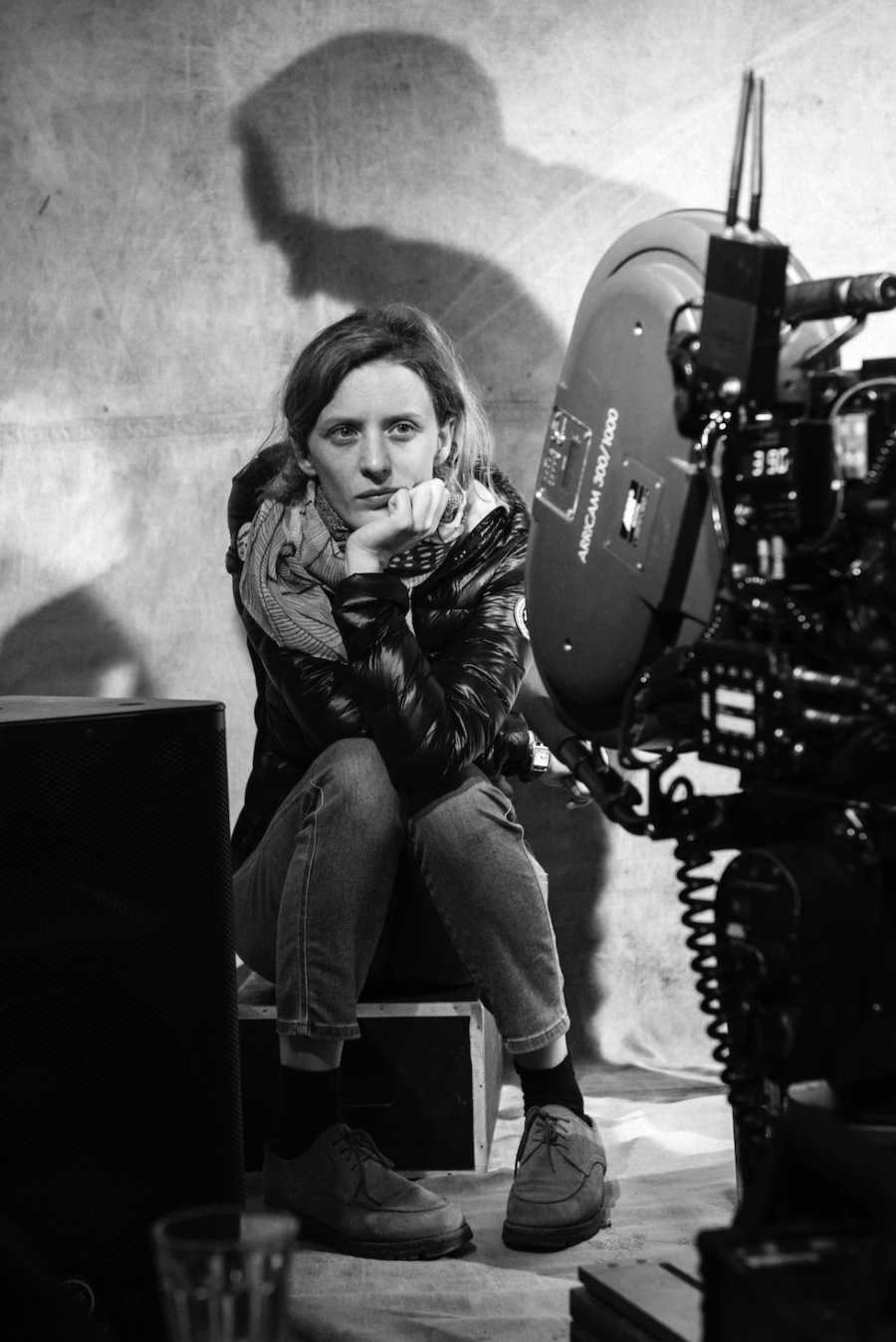
Above the Line: Is there something special about the New York Film Festival to you, and how does it feel to be back at the fest for the second year in a row?
Mia Hansen-Løve: Well, last year was a bit special because the pandemic was still quite present in everybody’s minds. Maybe it’s still that [way] this year, but it feels that people are less anxious about it. So there was still this climate of anxiety last year that made the experience a little bit less [light].
But it’s hard for me to say how important or how much of an honor it is for me to be here because it’s not like my films have a big theatrical release in France. They get [a] good release and they could get good press, but they’re still a little bit like outsiders. And so to feel that they can have that kind of life abroad and that kind of recognition here in a moment where [the kind of] arthouse cinema films that I do are going through a very difficult time. We actually need that more than ever to keep self-confidence, so, I mean, it was always an honor for me to be here, and I was aware of how it’s not like there are many French films there, so I always felt very privileged to be selected, but it’s even more true today when I feel that the cinema that I do is so vulnerable.
ATL: Before we get into One Fine Morning, I want to back up and talk about Bergman Island, as I recently read that Owen Wilson was originally cast as the lead. Is that true?
Hansen-Løve: No, it was John Turturro and then Owen [Wilson]. It’s a long story [laughs].
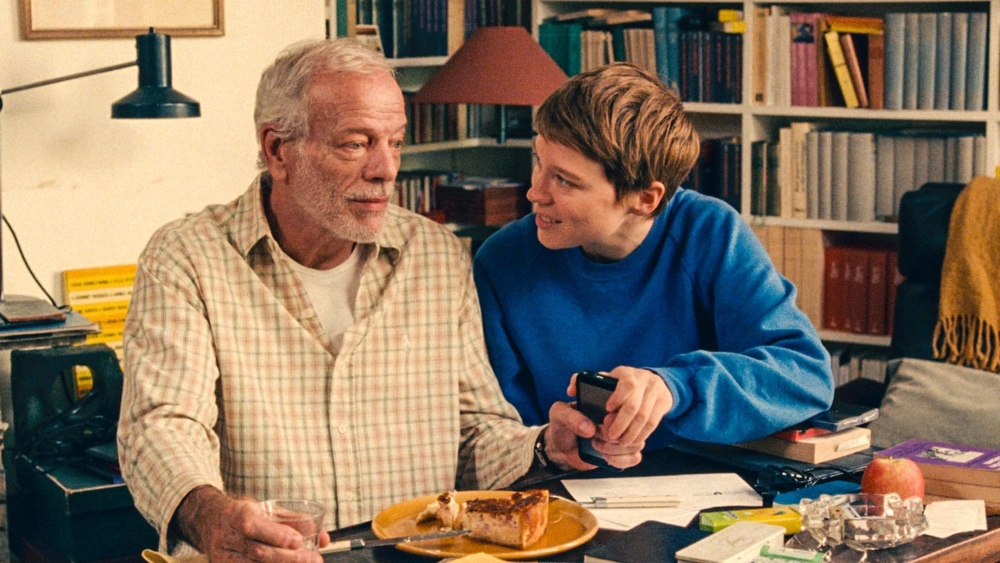
ATL: Do you think the film would have been any different had either of them wound up starring instead of Tim Roth?
Hansen-Løve: Well, I’m sure it would’ve been a very different film [just] as it would have been a different film if it had been with Greta Gerwig [in Vicky Krieps‘ role] as it was supposed to be in the beginning. But I have this conviction about the films that at the end, the things that you change that [needed] to be changed really make sense. It can sound naïve or like a superstition, but I truly, really believe in that. And ultimately, it’s the same for me with Vicky [Krieps] and Tim [Roth].
But about Vicky, I’m sure Greta would’ve been great in the film, but it would’ve been another film [and] now I can’t imagine the film with anybody else but her. And when I look at her in the film, it feels like she’s my alter-ego to a point [and] I can’t imagine anybody [embodying] me in the film, and maybe [it’s due to] the fact that it was her. I often feel [that] the kind of changes we go through in the process of making a film reveal to you what the films really are about — that there is a truth about these changes, in the end, you know?
And while Vicky and Tim became the leads of the film, it made the film more European in a way that it wouldn’t have been if it would have been with Greta Gerwig, John Turturro, or Owen Wilson, you know? Because they are actually Europeans — they both make American films in the U.S. and Tim lives in L.A. — [but] they have something European about them that I think brought the film closer to my intimacy, in a way.
ATL: And Bergman Island was your first English-language film, correct?
Hansen-Løve: Well, I had made a film called Maya before that was half in English, but it was English spoken by Indian people, so it’s a bit different, I guess. So that [Bergman Island] was my first film that was only shot and spoken entirely in English [laughs].

ATL: What was it like to transition back to a fully French-language film with One Fine Morning, which also takes place in France?
Hansen-Løve: It was really like going back home. And actually, it’s how I felt about making the film after Bergman Island — which I loved doing so much — but it was like escaping from my own territory. It was like reinventing myself far away and exploring. Somehow it was still close to me because, I mean, Sweden is not France, it’s another country, [so] it’s not my world, but I still have some kind of roots there. I have Danish-Scandinavian origin, so I have this connection with the Scandinavian countries, but still, it was an exploration of an unknown territory for me, and after that, I felt that I had to confront everyday life or things that I had gone through that were partly-painful, partly-happy, and I wanted to confront that in in a more direct way. Well, I don’t know if I wanted to confront it, [but] I had to, I really felt I had to make that film more than anything.
You know, for me, there were always some films that I made not because I wanted to, but because I felt the necessity of it, and that was the case with this film.
ATL: I know One Fine Morning is a personal story, so did you go back to locations that mean something to you personally?
Hansen-Løve: I guess you could say, in general, I love knowing them [the locations] so well that I have this organic connection to them and that helps me a great deal to [figure out] how to film the scenes.
I need to feel the places, to feel their pasts. There’s nothing that I enjoy more [than] when I shoot somewhere than to feel that the places are kind of haunted. And that’s part of why I loved making Bergman Island so much. But it’s also true about One Fine Morning.
Of course, it’s not like I only film in places that I know — that’s impossible — but [there are] two hospitals and two nursing homes. And three of the four were places [were] where my father [stayed], so I knew these places, and I actually shot in the very same rooms where he was. So you [can] imagine how full of memories these places were for me, which sometimes felt a little bit heavy to carry when I was shooting, but actually helped me to know how to film those things.
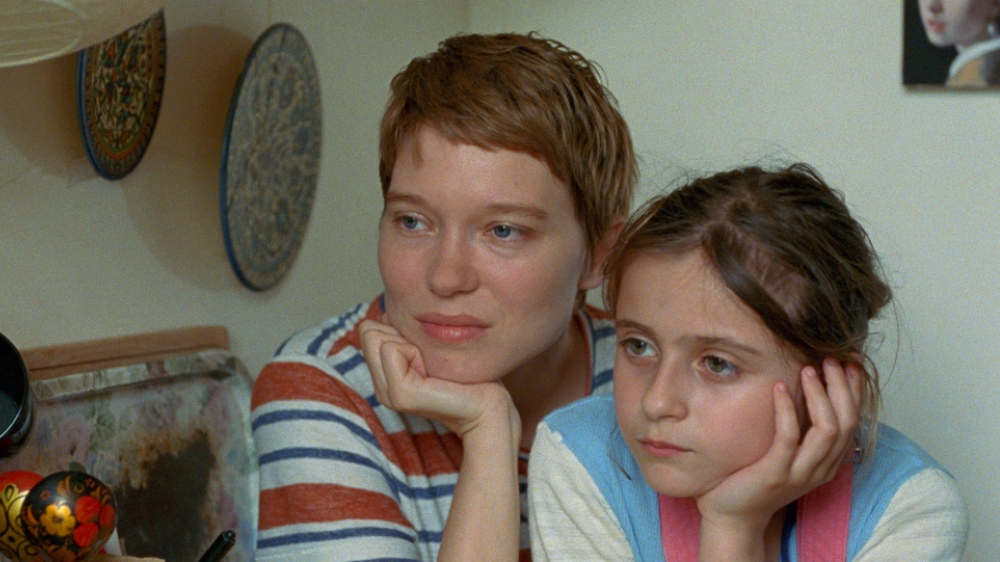
ATL: Did you feel any sense of catharsis after you finished filming in those locations?
Hansen-Løve: I did. I mean, I think I’m always looking for catharsis when making my films in different ways, but it was never as obvious [as] it was here, especially since my father died after I wrote the script. He was still alive when I wrote it, but he died after from Covid, and making the film and going back to those places was a way for me to find him again somehow. I mean, of course, it’s not him; it’s a recreation, it’s actors, it’s reinvention, but that’s how catharsis works for me.
Nothing would depress me more than if I wasn’t going to make [this] film there [and] then go back to these places where he died, where he suffered, and it’s only because I’m going there in order to make a film, where it’s going to become like a game, and we are reinventing those scenes that were [so] painful. But why [do] they [then] become scenes in a film? [So] they’re not painful anymore.
I think many filmmakers are kids that never grew up. You know, kids, they play with dolls and they pretend dolls are sick, dolls are dying, that dolls are hospitals and that’s cathartic, that’s how it works, and I think for me, maybe I should feel ashamed to say that, but I think the power of fiction has to do with that. It heals the wounds of life for me, and I hope I can transmit some of that to the audience.
ATL: You don’t have to go too deep into this, but how much of One Fine Morning is based on your own experiences with your father?
Hansen-Løve: I mean, most of my films are made out of experiences that I went through. Some are experiences that are my own, but sometimes they’re just inspired by people who I have known, who I’ve loved, and who have disappeared. My second feature, for instance, Father of My Children, was inspired by a film producer who I had known; it wasn’t my life — it was more about his life.
In this case, it looks more autobiographical because my father has had that disease and the film was not only inspired by that, but by happier experiences that [were] mine at the same time. But it’s hard to say afterward [that] that’s exactly this, [because] it’s not, [though] what I can tell you [is that] the emotions that are involved in the film [and] that the film is about, they are the emotions that I’ve been through and that have inspired me [and] the movie. But when it’s transposed, there are a lot of things that I’ve changed, and that are not necessarily things that happened to me the way [they’re] told in the film.
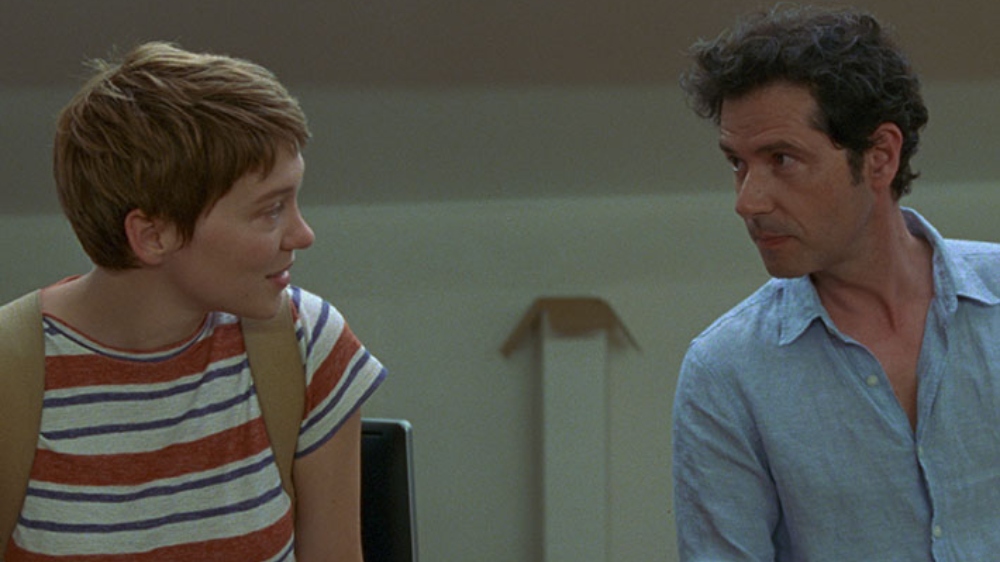
ATL: I admire the way that you tackle mundane everyday tragedies; things that can happen to everyone. You talked about how you infuse personal experiences into your films, so was that always your goal in telling these universal stories?
Hansen-Løve: Well, thank you [for] saying that since there is nothing more gratifying [than] hearing that stories that are so personal can also be universal. I always write them with the belief, or the hope, that they could be universal. But I don’t think we should write them with that goal. I think directors are maybe too obsessed with being universal in a way that they don’t want to be personal because they want to [gloss] over their own experience in order to reach universality, but that often leads to stereotypes, you know? And I always made the films with the belief that the more specific I was, the deeper I would go.
Even if it looks specific at the end, I always thought that it’s not just how universal the stories look, but it’s about the way you look at them and how deep you look at your own experiences. And I always thought that I should talk about my own experiences because that’s what I know the most. I want to talk about things I know, I don’t want to [give] a superficial look on life and I know there are tons of other ways to write, but the best way that I know to write is to really explore my own intimate experience in life, and then I do that. And then I just believe that some people can connect to it, even if it’s not their experience.
A couple of days ago, I was showing the film to the public in France, and at the end of the screening there was this guy and he was like, in his sixties, he didn’t look like me at all — as you can imagine [laughs] — and [this] was in a small town in France, [so] he obviously had a totally experience of life and he said [that] he had enjoyed the film, but he said that he had totally identified with Sandra (Seydoux), and that was the nicest thing for me to hear. So, I mean, I don’t think you have to have the same life and the same look and be the same gender in order to be able to feel empathy and to connect with a character in a film. I think it has to do more with the feelings and emotions that the film communicates.
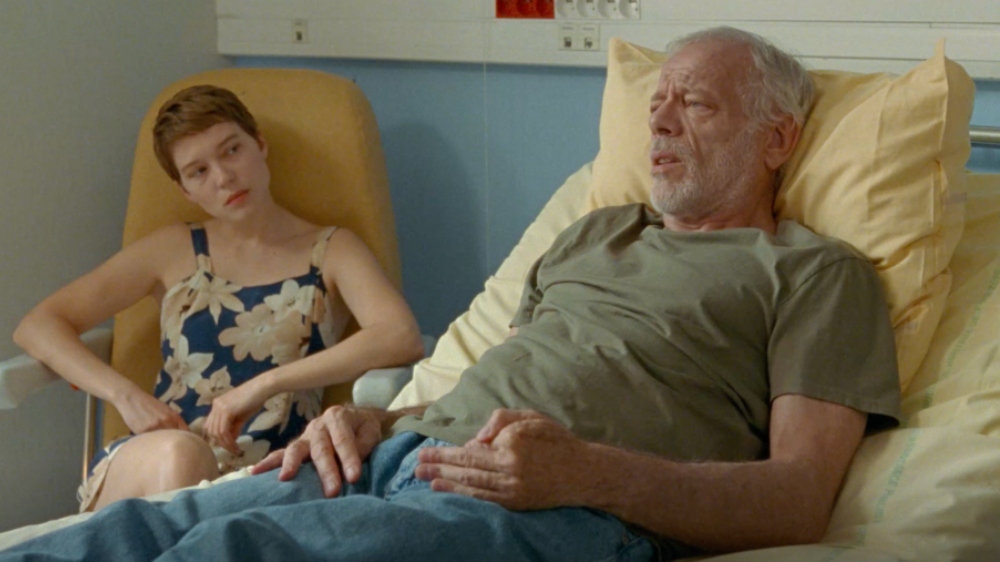
ATL: I know the film was shot on film, but did you use anamorphic or spherical lenses?
Hansen-Løve: [We didn’t use] CinemaScope, but we did it with two [reels]. You know, when you shoot on film, you can either have four — that’s the best quality — or three, or two. In order to make it cheaper, we shot with two, which means you use only half of it [and] means you have that kind of image, and then you cut. So at the end, you have a very, very small film frame.
ATL: I’m interested in the role of younger children in your films, especially in Bergman Island and One Fine Morning, and I’m just curious if they’re also a reflection of yourself. I know there’s a twist to that in Bergman Island, but at the end of both films, I noticed these touching moments between parents and children.
Hansen-Løve: Well, actually, children have always been very inspiring for me. I started to [cast] children [when] I started making films. In my two first feature films, they were not the main [characters], but there were a lot of kids involved, and my dream [is] to make a film with children as leads — I just [haven’t] gotten the right inspiration for that yet.
But what I mean is that I think I gave a lot of attention to that and I think when you have a child in a scene or in a film, you should really look at [them]. I think so many films just use children as toys; they just use them [to support] the main characters/the stars of the film, but they’re not really properly looked at and you can see that because of the way they talk and behave, and it’s very mechanical.
For me, it’s very defining that for the kind of films that I want to do, if I have kids involved, whether it would be in one scene or in more scenes — like in this film — I should give them some space and some freedom and find a way to let them fully exist in the film.
One Fine Morning had its world premiere at the Cannes Film Festival and will be released in January by Sony Pictures Classics in the U.S.



